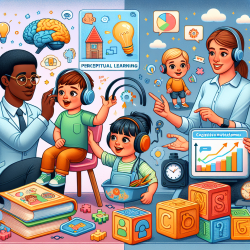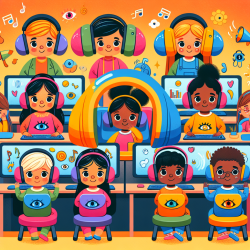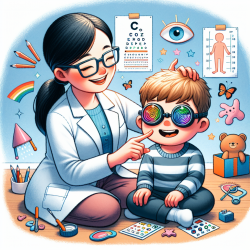Introduction
In the realm of speech-language pathology, understanding how children make connections between seemingly unrelated scenarios can significantly enhance therapeutic outcomes. The research article titled "Improving Perception to Make Distant Connections Closer" provides valuable insights into how perceptual learning can be leveraged to improve cognitive development in children. This blog explores the practical applications of these findings for practitioners, particularly those involved in online therapy services like TinyEYE.
The Power of Perceptual Learning
Perceptual learning is a process through which the brain's perceptual systems adapt to better meet the demands of high-level cognition. The research by Goldstone, Landy, and Brunel (2011) suggests that perceptual systems are not static; they can be trained to make sophisticated connections between disparate scenarios. This ability is crucial for developing cognitive skills in children, as it allows them to draw inferences and make connections that are not immediately obvious.
Applications in Speech-Language Pathology
For practitioners, the implications of this research are profound. By understanding and applying the principles of perceptual learning, therapists can enhance their interventions. Here are some strategies:
- Customized Learning Experiences: Tailor therapy sessions to include exercises that encourage children to make connections between different concepts. This can be achieved through interactive games that mimic real-world scenarios.
- Use of Analogies: Incorporate analogies that relate to the child's everyday experiences. This helps in grounding abstract concepts in familiar contexts, making them easier to understand.
- Visual and Spatial Tools: Utilize visual aids and spatial representations to help children visualize relationships between concepts. Tools like diagrams and models can make abstract ideas more tangible.
Encouraging Further Research
While the current research provides a solid foundation, there is always room for further exploration. Practitioners are encouraged to conduct their own studies to see how these principles can be tailored to specific therapeutic needs. Collaboration with researchers can lead to innovative strategies that are both evidence-based and highly effective.
Conclusion
By integrating the principles of perceptual learning into therapeutic practices, speech-language pathologists can significantly enhance the outcomes for children. The ability to make connections between seemingly unrelated scenarios is a critical cognitive skill that can be developed through targeted interventions. As we continue to explore and apply these findings, the potential for improving children's cognitive development is immense.
To read the original research paper, please follow this link: Improving Perception to Make Distant Connections Closer.










